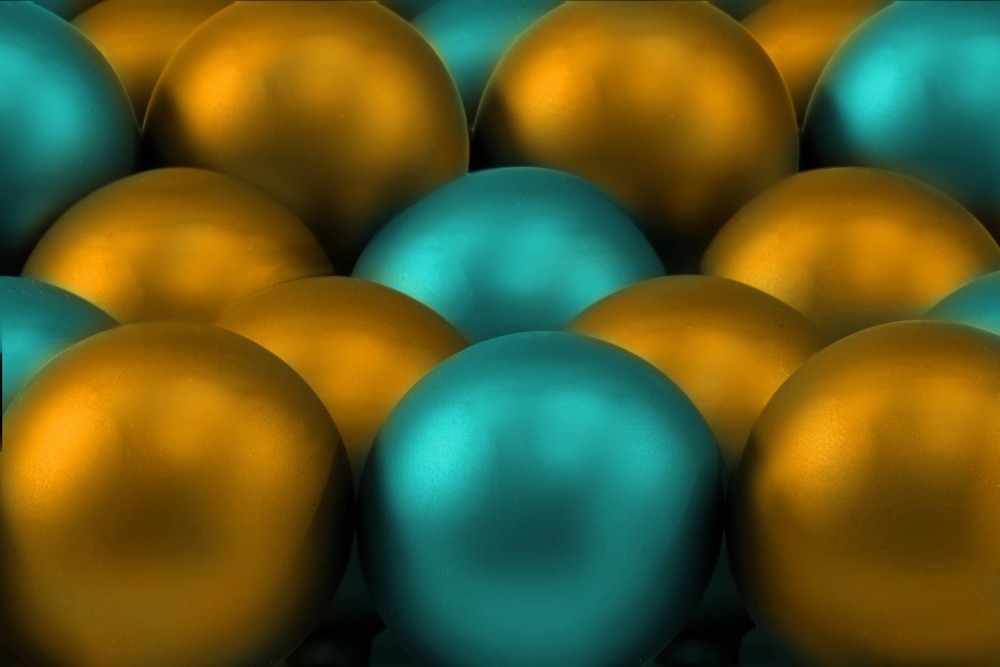Nickel-aluminum layered double hydroxides (Ni-Al LDHs) have layered structures and tunable transition metal charges, and are applied in conversion and energy storage devices. The molar ratio of Ni/Al in NiAl-LDH significantly modifies the structural, interfacial, and electrochemical properties, improving reaction efficiency and kinetics.

Study: Dynamic Changes of Ni-Al LDH Nanosheets under Potential Cycling Investigated by In Situ Electrochemical Atomic Force Microscopy. Image Credit: photoinnovation/Shutterstock.com
In an article published in the journal ACS Applied Energy Materials, the nanomechanical and morphological changes were investigated in Ni-Al-n LDH (n denotes the molar ratio of Ni/Al) nanosheets by utilizing in situ electrochemical atomic force microscopy during potential cycling.
The potential cycle-mediated oxidation of nickel ion (Ni2+ to Ni3+) along with aluminum ion’s (Al3+) amphoteric properties led to the disintegration of Ni-Al-n LDH nanosheets. Compared to Ni-Al-3 LDH and Ni-Al-2.5 LDH nanosheets, the dissolution rate was slower in Ni-Al-2 LDH nanosheets.
The rearrangement of Al3+ and Ni2+ ions and Ni/Al molar ratio significantly influenced the microcrystalline structure of Ni-Al LDH nanosheets. Moreover, the area with dissolved Ni-Al-n LDH nanosheets showed a greater Young’s modulus value than the undissolved area.
Thus, the dissolved area had a harder property. Within this framework, Ni-Al-2 LDH nanosheet’s slow disintegration was more conducive to enhancing the electrochemical performance than the rapidly disintegrating Ni-Al-3 LDH and Ni-Al- 2.5 LDH nanosheets.
Significance and Properties of Ni-Al LDHs
LDHs have potential applications in catalysis, adsorption, additives in polymers, drug delivery, environmental remediation, and energy storage. Ni-Al LDHs are a type of metal hydroxide with numerous uses as supercapacitor materials. Compared to other LDH electrode materials, Ni-Al LDHs have a high specific surface area, outstanding performance, and are cheap.
The in situ electrochemical atomic force microscopy measurements in an electrochemical cell helps investigate the actual changes in the electrode surface morphology during electrochemical reactions. Thus, the development of in situ electrochemical atomic force microscopy technique has provided the capability to study the surface of electrodes under real-time operating conditions.
Nevertheless, the experimental conditions of in situ electrochemical atomic force microscopy must be carefully fixed to achieve reproducible electrochemical measurements and images of good quality.
Ni-Al LDHs have poor conductivity, which impacts the kinetics of electron transport and limits their potential for commercialization. Additionally, due to structural collapse during electrochemical reactions and agglomeration into massive grains due to the high current density-induced charge-discharge phenomenon, the Ni-Al LDH electrode's structural integrity influences the increased rate capability and cycle stability.
Investigating the Changes of Ni-Al LDH Nanosheets by In Situ Electrochemical Atomic Force Microscopy
Previously, the structure and composition of Ni-Al LDHs were investigated to meet functional and electrochemical performance criteria. However, the impact of composition on electrochemical reaction-mediated morphological evolutions has remained unexplored to date.
Tailoring the molar ratio of Ni/Al and obtaining detailed knowledge of the mechanism via research on the morphological progressions of Ni-Al LDH nanosheets while conducting electrochemical reactions are effective methods to enhance the performance of Ni-Al LDHs in energy storage devices.
Thus, in the present study, morphological evolutions and changes in the nanomechanical properties of three Ni-Al-n LDH nanosheets were investigated during potential cycling utilizing the in situ electrochemical atomic force microscopy.
Although a substantial disintegration was observed during potential cycling in all Ni-Al-n LDH nanosheets, only partial dissolution was observed in Ni-Al-2 LDH nanosheets after 150 cycles. On the other hand, Ni-Al-3 LDH and Ni-Al-2.5 LDH nanosheets dissolved completely, exposing a new surface layer which indicated that tuning the molar ratio of Ni/Al had significant effects on the Ni-Al LDH’s nanomechanical properties and morphological evolutions.
Additionally, nanosheets' Young's modulus values also increased with the Ni/Al molar ratio, and all three nanosheets exhibited a higher Young's modulus in the dissolved region than the undissolved counterpart. This dissolved part showed a relatively hard property
Ni-Al-2 LDH electrodes showed a slower disintegration rate than Ni-Al-3 LDH and Ni-Al-2.5 LDH electrodes, as demonstrated quantitatively by utilizing an inductively coupled plasma-mass spectrometer (ICPMS).
Furthermore, the density functional theory (DFT) calculations revealed the presence of flaws and oxygen vacancies in Ni-Al-2 and Ni-Al-2.5 LDH nanosheets, indicating that the Al concentration in Ni-Al-n LDH nanosheets greatly influenced the morphological, nanomechanical, and capacitance properties.
Conclusion
In conclusion, for the first time, in situ electrochemical atomic force microscopy was employed to examine the effect of Al content on the morphological evolution and changes in the nanomechanical properties of Ni-Al-n LDH nanosheets during potential cycling. Ni-Al-n LDHs' weak electrical conductivity can be efficiently compensated by precisely controlling the molar ratio of Ni/Al, which can also enhance the electrochemical characteristics.
For precise compositional alteration and fabrication of Ni-Al LDH-based electrode material, this study demonstrated that it is crucial to understand how the molar ratio of Ni/Al affects the morphology and nanomechanical properties of Ni-Al LDH nanosheets during potential cycling.
Reference
Guan, Y et al. (2022). Dynamic Changes of Ni-Al LDH Nanosheets under Potential Cycling Investigated by In Situ Electrochemical Atomic Force Microscopy. ACS Applied Energy Materials. https://pubs.acs.org/doi/10.1021/acsaem.2c01850
Disclaimer: The views expressed here are those of the author expressed in their private capacity and do not necessarily represent the views of AZoM.com Limited T/A AZoNetwork the owner and operator of this website. This disclaimer forms part of the Terms and conditions of use of this website.